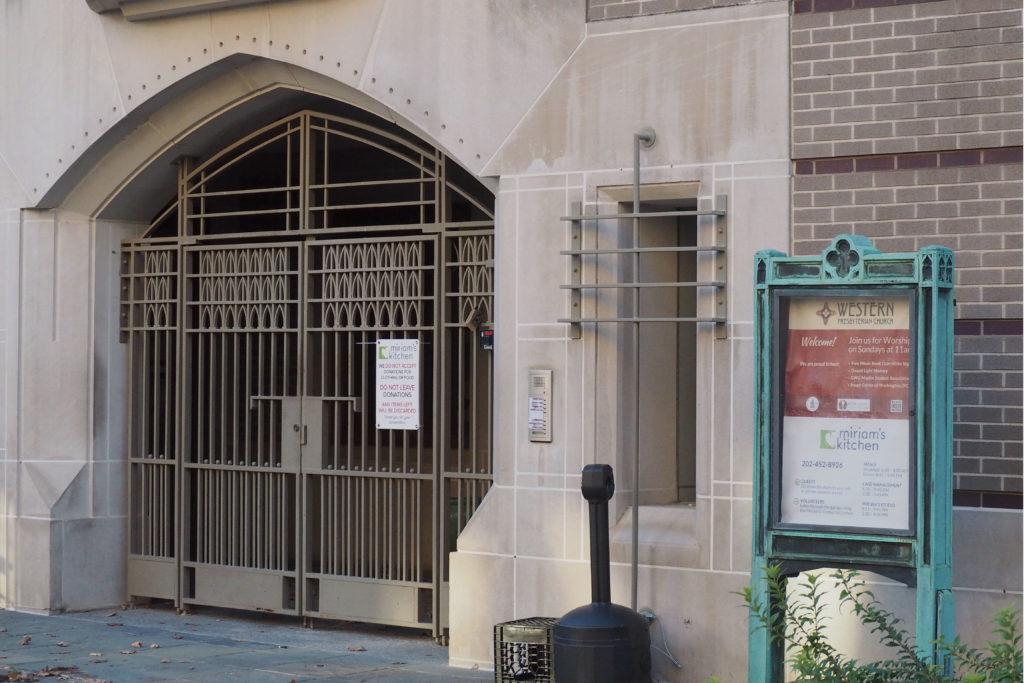GW sits in an area of the United States facing some of the highest food insecurity and housing rates in the country, according to a nationwide study the Urban Institute released late last month.
Nearly 12 percent of the District’s population struggles with food insecurity, meaning an individual lacks sufficient access to nutritious and affordable food, according to the study. Community members who work to combat food insecurity in the District said D.C.’s soaring housing costs hinder low-income residents’ ability to pay for food.
Marina Streznewski, the president of the Foggy Bottom Association, said low-income individuals often need to prioritize housing costs over grocery costs because residents have to meet rent deadlines, not food deadlines.
“When you are insecure in one area of your life, you try tightening up your expenses in all other areas of your life, including food,” Streznewski said.
The study found that 38 percent of D.C.’s population is housing cost burdened – 4 percent higher than its peer group, a selection of urban areas like Boone County, Mo., and Providence County, R.I. Almost 16 percent of D.C.’s population is considered “extremely housing cost burdened,” about 5 percent higher than the average of the District’s peer group, according to the report.
The report states that housing instability – defined in the report as the inability to keep permanent housing for financial reasons – is a risk factor for food instability. The District is one of the most expensive cities in the United States to move to, according to a study released in July.
Senior citizens in Foggy Bottom face the brunt of food insecurity in the community because aging individuals are not as likely to cook for themselves because they are not as strong or may have a tremor, which makes their movements shaky, Streznewski said.
The Foggy Bottom Association partnered with the GW Hospital last year to give senior citizens a 50 percent discount on food in the GW Hospital cafeteria, which includes a Starbucks and a Subway, Streznewski said. She said the program has helped senior citizens who struggle to find affordable food in Foggy Bottom.
“I get stopped so many times by people who said, ‘Thank you so much, this really helps a lot,’” Streznewski said.
Students with a Foggy Bottom Association membership, which costs $10 a year, can also receive a 25 percent discount in the GW Hospital cafeteria, Streznewski said.
A report released last December found that nearly 40 percent of students faced low or very low levels of food insecurity. The Hatchet reported that students often skipped meals so that they didn’t run out of food.
“Everything is expensive, especially housing, and that has a trickle-down effect on the ability to afford food,” she said.
Cheryl Bell, the executive chef for Miriam’s Kitchen, said her organization works with other community groups, like Western Presbyterian Church and GW Hillel, to provide meals and shelter for the population of people experiencing homelessness in Foggy Bottom.
“D.C. is a small place with a big city population,” Bell said in an email.
Bell said companies that come into D.C. with tax incentives increase the property costs in a given area.
The highest levels of food insecurity in the District are in Wards 7 and 8, which are home to a high concentration of low-income residents.
Miriam’s Kitchen partners with the GroW Garden to provide fresh produce for meals that Miriam’s Kitchen prepares, Bell said.
“Starting in 2017, we worked with the former managers Elizabeth Ferrante ‘Lizzie’ and Isabelle ‘Izzy’ Moody to expand our use of the garden to grow for our Permanent Supportive Housing residents,” she said.
Melissa Jensen, an anti-hunger program associate for D.C. Hunger Solutions, said the nonprofit strengthens federal nutrition programs and provides meals for children who are not in school over the summer.
Almost 36 percent of residents in Ward 7 and 27 percent of residents in Ward 8 live below the poverty line – which the U.S. Department of Health and Human Services defines as when a family of four only makes $25,750 a year. An average of 17 percent of the D.C. population lives below the poverty line, according to Census Reporter, a website that tracks U.S. demographic data.
“That being said, food insecurity is something that occurs everywhere, and people don’t realize it and we have people in need all over the District,” Jensen said.
Jensen said 6 percent of people – the second-lowest percentage District-wide – who receive assistance from the Supplemental Nutrition Assistance Program are from Ward 2. The highest percentage of D.C.’s SNAP recipients, 23 percent, are from Ward 7, she said.
Jensen said the dichotomy between the high- and low-income residences in D.C. leads people to ignore the District’s food insecurity problems because the topic is uncomfortable for community members to acknowledge.
“No one wants to talk about the fact that we’re the capital of the richest nation in the history of the world and one in seven D.C. residents can’t afford enough food to eat,” she said.





